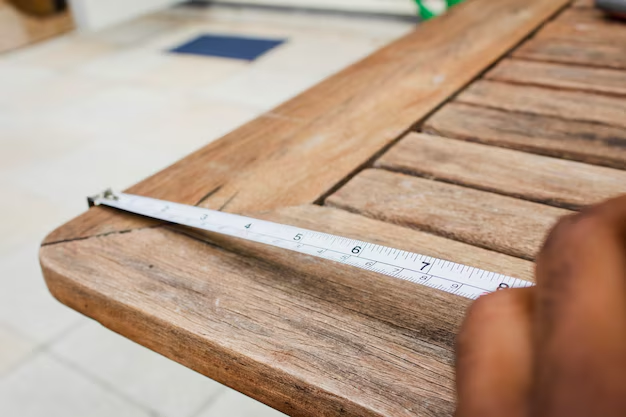Making the Right Fit: How to Accurately Measure for a New Refrigerator
Shopping for a new refrigerator can be exciting yet daunting. With a plethora of models to choose from, ensuring you select the right size for your space can mean the difference between a hassle-free installation and a return trip to the store. Let's explore how you can confidently measure your space and find the perfect refrigerator replacement.
📏 Why Accurate Measurement Matters
Obtaining precise measurements is crucial when purchasing a new refrigerator. Not only does it help avoid the frustration of a unit that doesn't fit, but it also ensures optimal functionality and aesthetics in your kitchen. A well-fitted refrigerator enhances energy efficiency and maximizes storage capacity.
Key Factors to Consider:
- Space optimization: A proper fit can make your kitchen feel more organized and spacious.
- Energy efficiency: An adequately sized refrigerator uses energy more efficiently.
- Aesthetics: A unit that fits well with the cabinetry and layout can enhance kitchen design.
🛠️ Tools You’ll Need
Before diving into the measurement process, gather a few simple tools to ensure your measurements are precise and reliable:
- Measuring tape: A flexible tape measure is ideal for precision.
- Note pad and pen: To jot down your findings.
- Level: Useful for checking evenness on your floors.
- Helper: An extra set of hands can keep the tape measure taut.
📐 Measuring Your Space
Assessing the Space
Start with a thorough evaluation of where your current refrigerator resides. This requires examining vertical and horizontal clearances, as well as existing obstacles.
1. Width Measurement
- Measure the width of the space at the narrowest point.
- Consider wall protrusions or any cabinetry that tightens the fit.
- Pro Tip: Add at least one inch of clearance on each side for proper ventilation.
2. Height Measurement
- Measure from the floor to the lowest point of any overhead cabinetry.
- Ensure there is some clearance above for airflow and ease of installation.
3. Depth Measurement
- Measure from the back wall to the front of the counter space for a flush fit.
- Don’t forget to account for door clearance; refrigerator doors will require space to swing open entirely.
Clearance Considerations
The space where your refrigerator will live isn’t the only measurement to keep in mind. Pathways and entry points are equally important.
Doors and Hallways: Measure all passages that the refrigerator will encounter on its journey to the kitchen. Ensure your new refrigerator can maneuver through doorways, hallways, and tight corners.
Appliance clearance: Account for open-door swing, especially in smaller kitchens, to avoid bumping into cabinets or walls.
🌟 Choosing the Right Size Refrigerator
Types of Refrigerators
Several refrigerator models cater to various lifestyle and kitchen layout needs. Deciding which type to get hinges on understanding your specific requirements.
1. Top-Freezer Models
- Generally offer a cost-effective and space-saving design.
- Measurements typically reflect most space within a standard kitchen, but still require precise measurements.
2. Bottom-Freezer Models
- Provide easier access to refrigerated items.
- Consider the pull-out drawer space for the freezer section.
3. Side-by-Side Models
- Ideal for narrow kitchens due to the smaller door swing.
- Focus on height and width appropriately with these models.
4. French Door Models
- Feature wide fresh food compartments and flexible storage options.
- Measure for depth to ensure no obstruction to doors.
🧩 Additional Considerations
Measuring for Installation & Setup
1. Floor Levelness
- A level floor ensures effective alignment and functionality for your refrigerator.
- Use a carpenter's level, and incorporate shims or adjusters if necessary.
2. Electrical and Water Hookups
- Location and accessibility of electrical outlets and water lines, if applicable, are essential for a seamless installation.
🔑 importance of Refrigerator Capacity
Beyond physical measurement, the internal capacity plays a pivotal role:
- Assess your shopping habits. Larger households may require spacious interiors.
- Consider features like ice and water dispensers, fresh food zones, and organization options.
Summary List: Quick Tips for Measuring
- 📏 Plan for clearances: At least 1 inch on the sides and back.
- 🔄 Door clearance: Ensure doors can open freely without obstruction.
- 👢 Transport considerations: Measure doorways and pathways to your kitchen for hassle-free delivery.
- ✍️ Check for levelness: Crucial for proper door alignment and sealing.
Bringing It All Together
Accurately measuring for a new refrigerator might seem like a simple task, but it requires careful consideration of multiple factors to ensure the best fit. Reflect on your kitchen's layout, your needs, and the various types of refrigerators available to make an informed decision. Whether replacing an old unit or remodeling your kitchen, taking the time to measure thoroughly ensures that your new appliance will be a perfect fit both spatially and aesthetically.
Remember, the goal is a seamless blend into your kitchen, maximizing both function and style while making every mealtime moment efficient and enjoyable. With these steps, you can confidently navigate the process, secure in your choice of a refrigerator that meets all your needs while enhancing your kitchen’s design.
